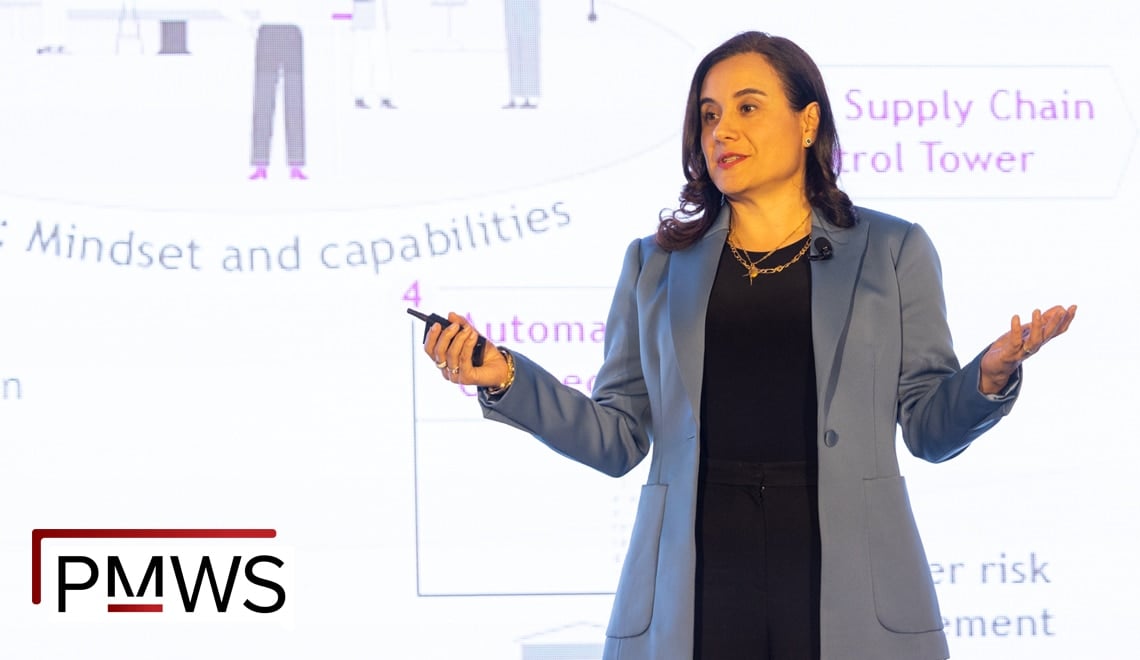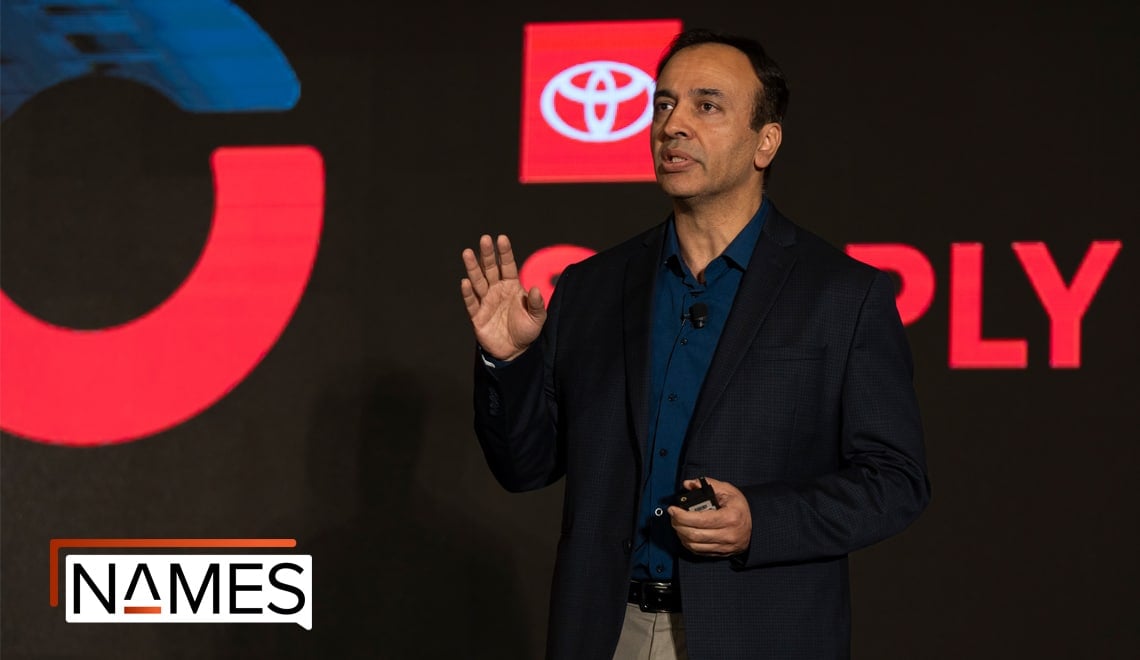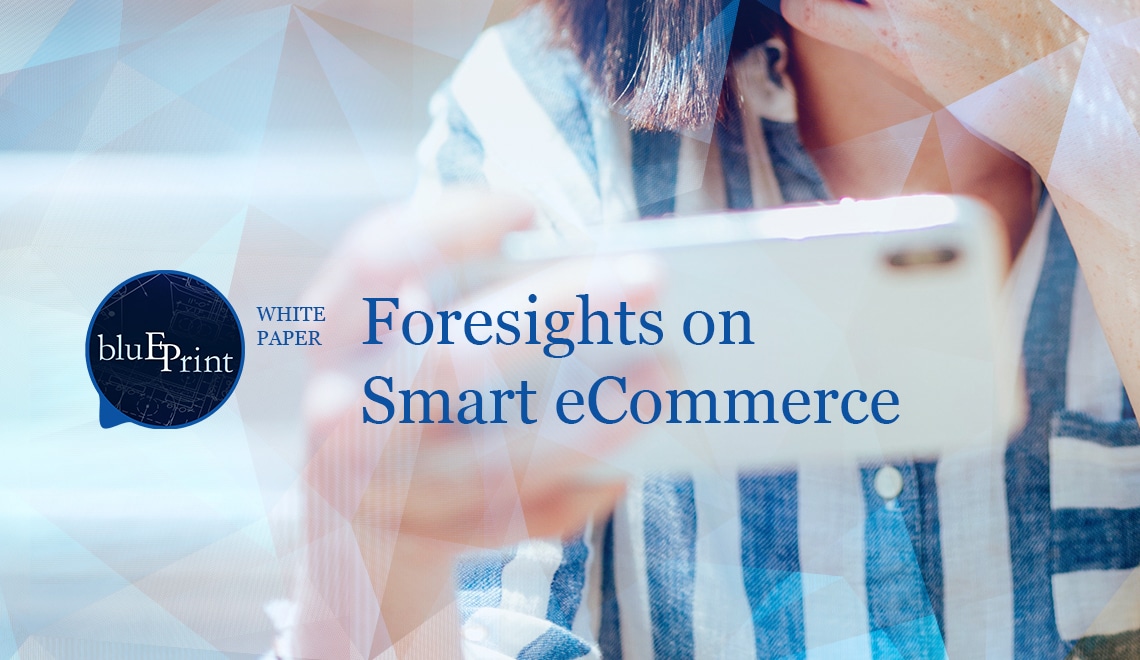
In the age of eCommerce, shoppers are getting smarter and so are cyber-criminals. This white paper takes a close look with near-future scenarios and big picture insights based on present day developments. Discover how leading brands and grassroots innovators are evolving with the rise of eCommerce.
Smarter Shoppers, Smarter Service

–
- Customer Close-up:
In the near-future, Sam is sitting in his room shopping for a birthday present for himself. His Grandpa Bennie lets him choose his own gift every year. Sam taps his phone to test out the motorcycle gear. He goes into AR selfie mode and it shows him wearing the latest jacket. “Hmm…” Sam likes the color, but it looks baggy around the middle when zipped up. Sam taps on explore, to check out similar coats in slim-fit styles. He texts a buddy to see if he wants to check out the store together, they have the sweetest photo-booth there. - Big Picture Takeaways:
Ease of transaction is key, online and offline. However, while online purchases are easily accessible and happening consistently throughout the day there is still room for retail. Physical shopping is still treated as a social activity, and supply chains can benefit from treating physical stores as a place shoppers can try items before purchasing online.
–
“The transition to the mobile is going to be the most important transition in the next ten years.” –Omar Zayat, Head of Industry, Enterprise eCommerce, Facebook
Based on Present Developments
- Provide customers with visual discovery: Pinterest released Shop the Look, a visual search algorithm that gives recommendations based on pictures the user is interested in. So far, they’ve partnered with Home Depot in giving shoppers a customized experience in their searches.
- Chatbots get personal: Most chatbots can answer common customer questions, like a personalized FAQ page but others go even further. Customers can search recipes at Whole Foods with emojis and get playlist recommendations on Spotify based on how they’re feeling.
- AR Mobile testing: IKEA allows customers to place AR furniture in their own homes and virtual tours are available for homebuyers.
- Optimize recommendation algorithms: Recommendation engines for eCommerce organizations like Amazon generate 35% of their revenue.
Ding ding! Digital Delivery On Demand
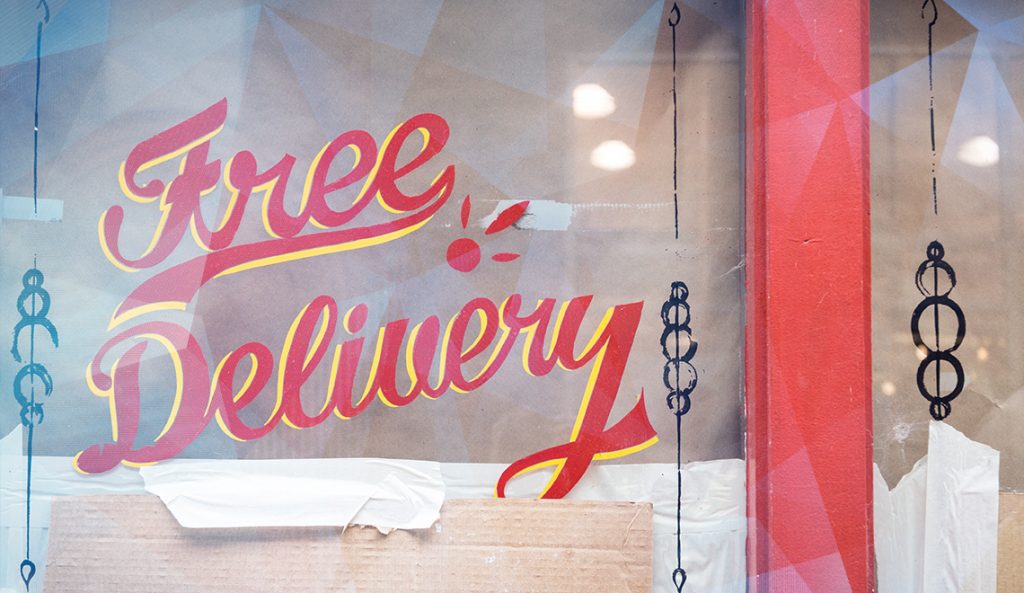
Every step of getting the product to the customer is speeding up, from automated warehouses to transport. Robot picking is reducing human errors, and a single truck driver can a platoon of up to five more following behind. As monitoring IoT processes become easier for organizations, they can also communicate better with the customers on their delivery.
–
- Customer Close-up:
“Sam! We’re going to make the risotto in a few minutes!” Kelly called to her son. She can’t wait to prepare her signature dish for the family potluck tonight. The ingredients should be arriving soon. After all, she did order it over an hour ago. A notification pops up on her phone. “Hi Kelly, your order is on its way with a 22-minute delay. We have rerouted your delivery due to a minor traffic accident. How would you like to be compensated for your wait?” Kelly scrolls through the options. “Hmm, not bad.” She chooses a discount on her next order. Even though she wants to cook soon, she can’t be too upset with a company that is actively trying to make her happy. - Big Picture Takeaways:
To keep up with the eCommerce boom, organizations are delivering faster and giving immediate updates. Technology like blockchain and IoT can track deliveries so customers know exactly what is happening with their order. Using big data, organizations can also track past purchases to give automated, personalized rewards program.
–
Based on Present Developments:
- Anticipating deliveries before the purchase: Amazon’s “anticipatory shipping” AI is patented to get orders as close as possible to an address before the customer clicks buy. Forecasting demand is vital for Amazon to stay on top of the race for same-day and same-hour delivery.
- Predicting accurate arrival times: In addition to tracking sensitive shipments and reducing freight costs, A.I. helps companies like Amazon and Whole Foods with delivery routing software to optimize their movement and reach consumers on time. IoT can track factors that affect delivery from the stress level of the truck driver to traffic information.
- Same hour groceries: Walmart currently delivers 90% of their grocery orders within 3 hours to their customers. Roberto Villalobos, Director of Digital operations at Walmart describes their physical stores as a warehouse for online delivery.
- Subscription models brings niched products to customers:
Subscription boxes for needs like women’s monthly cycle outnumber fashion or lifestyle ones.
Ordering Green – Sustainable Initiatives

The demand for trucking is soaring because of the demand for last-mile delivery. More online shopping means more delivery costs to the environment. Millennials are the biggest supporters for online shopping, but they also care the most about the planet. Currently, organizations are investing into energy efficient delivery options and customers can feel better about their purchase.
–
- Customer close-up:
Knock knock!
Kelly opens the door to a friendly-looking delivery man. Out on the curb she sees a different delivery truck from last time. He follows her gaze. “We just upgraded to electric trucks. They’re emission-free.” Kelly wonders if she should switch soon too. Her son Sam is always looking into those electric motorcycles. The delivery man hands her a grey tote box with her groceries in them. “We appreciate your patience; you’ll receive a discount on your next order. I’ll be making my rounds at 6 p.m. to pick up the boxes.” “Thank you! Have a great day.” - Big Picture Takeaways:
Electric vehicles and reusable packaging are just some of the ways organizations can reduce their carbon footprint. Using IoT, not only can they track delays but also what areas in their shipping operations that are wasting time and energy. With better planning, collaboration and shared loads, eCommerce and customers can work together for a greener future.
–
Based on Present Developments:
- Reusable packaging program across brands: Loop has signed 25 high-profile brands including Häagen-Dazs, Axe, and Tide. Customers can order from the Loop website and get ice cream and after shave delivered to them in reusable Loop Totes. They will then be picked up, cleaned and refilled for the next delivery.
- Rival companies share a ride and warehousing:
Nestle and PepsiCo share warehouse capabilities including packing operations and distribution of food for retailers in Belgium and Luxemburg. Many competing FMCG manufacturers distribute at the same retailers and benefit from sharing warehousing and costs. - Hitchhiking empty farm trucks:
Indigo AG Inc. is spearheading Transport, an app that connects shippers to carriers and uses trucks that would normally go home empty after delivering a load. According to the World Economic Forum, 50% of trucks travel empty on their return journey after making a delivery. With a shortage of truck drivers and increased costs, and this initiative is meeting that demand. - Electric vehicles in your delivery supply chain:
Tesla’s electric trucks have already been ordered by companies like PepsiCo and FedEx. Aside from reducing CO2 emissions by as much as 94%, these vehicles are optimized for road safety to reduce crash rates by 40% according to the U.S. gov. Although the Tesla truck costs $200 000, it only costs $1.26 a mile to run compared to $1.51 for diesel so it would be a cost-effective long term investment.
As shoppers order more, transporting goods to them is leaving a bigger mark on the environment. Here are some examples of ways to cut costs and create a more sustainable supply chain.
“One of the core focuses of ORTEC is taking trucks off the road and making businesses more efficient.” – Aaron Geiger, Managing Director Manufacturing, ORTEC
Many companies today still do static routes and stop by customers who don’t need their services. Dynamic routes can leave a significantly smaller carbon footprint and save 5-10% of costs. Organizations can further save energy by looking at their transport system in terms of how trucks are being put together, which one is stopping first and stackability.
“If you’re planning safety stock and you thought you needed eitght days of safety, we use sophisticated modelling to tell them they only need days which would save X millions of dollars.” – Joseph Selle, Enterprise AI Transformation, IBM
Although managers are hesitant to take risks with safety stock even though it saves money and energy, IBM has found giving the AI answer with a probability confidence and reasons results in more follow through with the prescripted advice.
eGood and eCrime: Two Sides to the eCommerce Coin

It may not feel that way, but the internet is still in its childhood. While Big Data and IoT keeps us connected and communicating, it also leaves organizations and consumers vulnerable to hacks. However, nobody can discount the good electronic transactions and automation has brought.
–
- Customer Close-Up:
Bennie’s phone vibrates. “Your Lyft is ready Bennie.”
Oh, is the appointment today? With the family potluck happening tonight, it completely slipped his mind. Bennie grabs his cane and hobbles out the door. He’s still quite active for a 78-year-old, but he is glad the clinic automatically organizes rides for him. Otherwise he’d forget to get his monthly shot to keep his sight from failing. Then how would he see his grandson Sam enjoy his birthday present? - Big Picture Takeaways:
Automation and information connectivity are helping customers get better service to suit their needs. On the other side of the coin, cybercriminals can abuse a great service or hack into restricted information. From medical to credit card information, a leak would compromise the trust customers have in your organization. Make proper investments into cybersecurity.
–
Based on Present Developments:
Ordering Transportation
- eGood: Transport for non-emergency medical situations– Lyft has made partnerships with NEMT (non-emergency medical transportation) companies. Transportation for these cases vary from area to area and it is a core determinant of health according to the American Hospital Association. For example, medicine that must be taken regularly may be available, but older citizens who do not drive don’t end up getting their treatment.
- eCrime: Shipments frozen at sea – In 2017, Maersk’s container ships and 76 terminals around the world were put on pause, with losses up to $300-million USD including IT restoration and operations. This all began when a single employee responded to an email with malware that affected the entire system.
Customer Service
- eGood: Sharing is caring about quality– Goodbye fast fashion, hello sharing economy. Vigga is a kids-wear brand that offers a monthly subscription for children’s clothes, that are replaced by a bigger set as they grow. Their profits are directly correlated to product quality.
- eCrime: Return abuse– A flexible return policy is great for customer service, but also abuse. Some customers buy with the intent of immediately returning items, such as buying multiple sizes or variations. Companies like L.L. Bean have ended lifetime replacement policies to limit extreme returners. The retail industry is estimated to lose 9.6 billion in return fraud
Product and Service Visibility
- eGood: Transparency for sustainable practices– Indigo Agriculture uses blockchain to keep track of crops from seed to harvest. They hire farmers for end-to-end production contracts which follows sustainable protocol.
- eCrime: False advertising – In 2017, the Fyre Festival was advertised by top influencers on Instagram. They promised a luxury experience with villas and instead were provided with domes designed for refugee camps. The experience became a safety hazard when it started to rain. Since then, Instagram has enforced stricter rules on transparency about ads.
Spending Sprees
- eGood: High fashion pays it forward – Olivela is an online store that sells luxury goods including handbags and dresses. 20% of the net proceeds goes towards funding education for girls around the world, allowing global shoppers to alleviate poverty.
- eCrime: Credit Card Breach – In 2018, Macy’s online customers’ credit card numbers were stolen due to a security breach. Fortunately, the Credit Verification Values (CVV) and social security numbers were stored on a separate profile, and Macy’s acted quickly reporting the stolen numbers were reported to the appropriate financial institution.
The future is coming, good and bad. In order to stay relevant your organization needs to be aware. Keep up to date with the latest innovations and opportunities at the North American E-Tail Operations Summit.
Want More In-Depth Conversations on Developments in eCommerce?
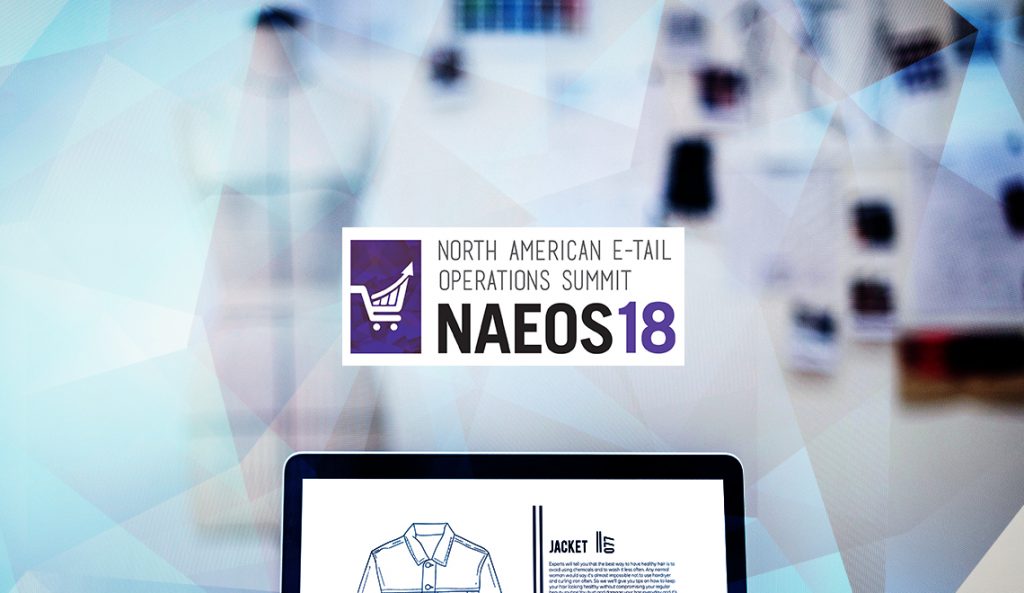
Whether you want to exchange notes on better customer service or keeping information secure, talk face to face with leading industry VPs. Here’s what top executives from Google and Nike to entrepreneurs have to say about the North American E-Tail Operations Summit (NAEOS):


